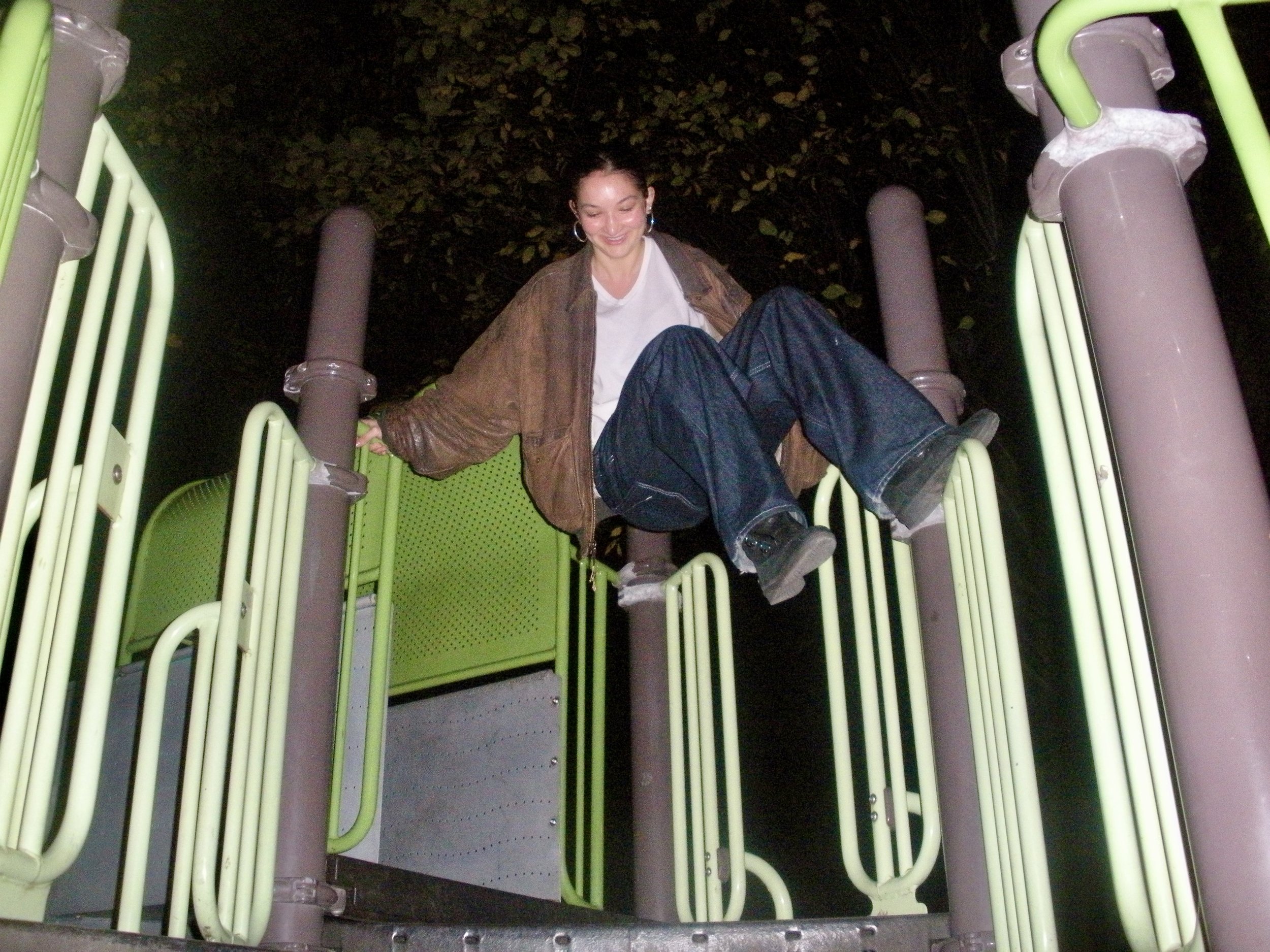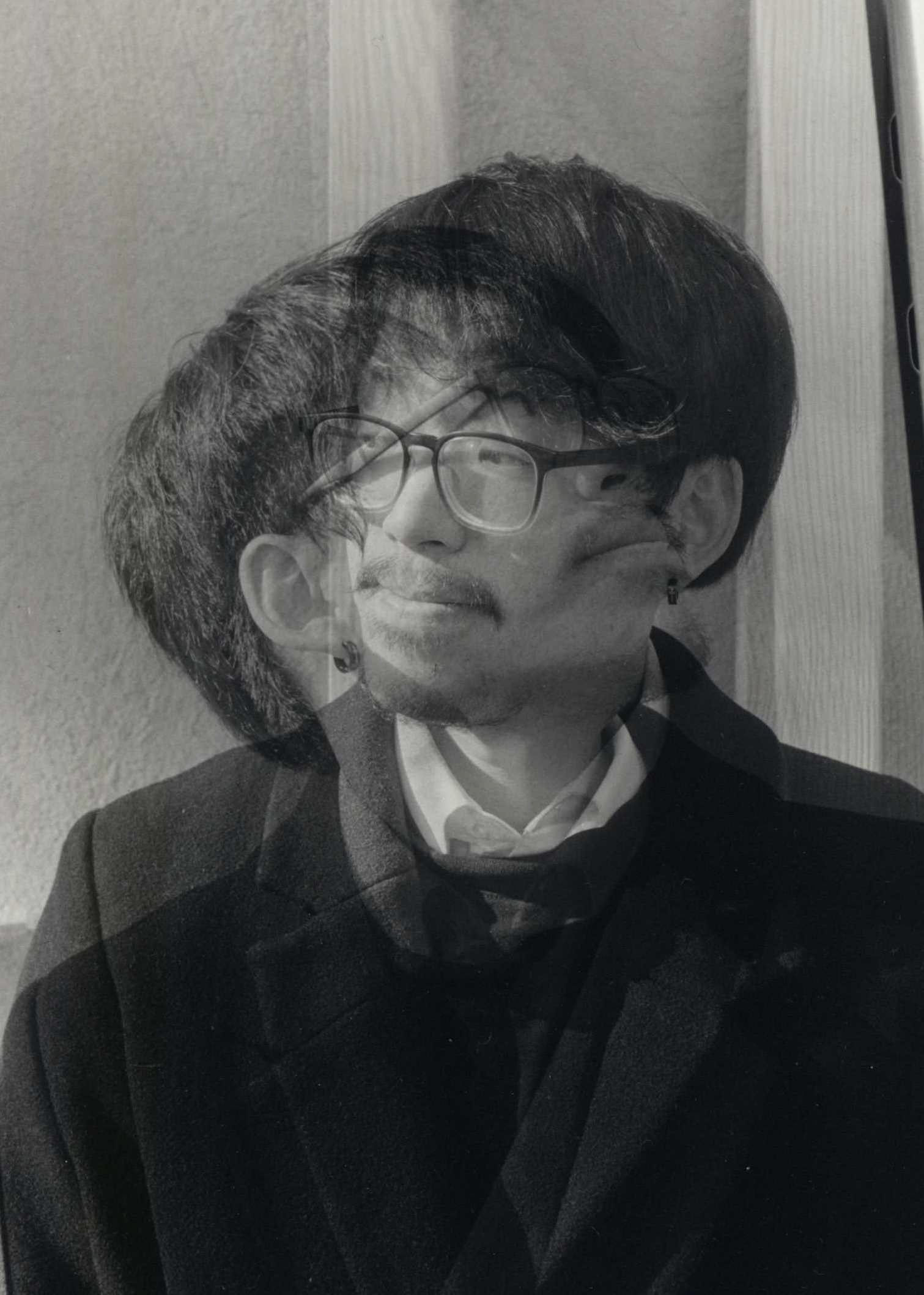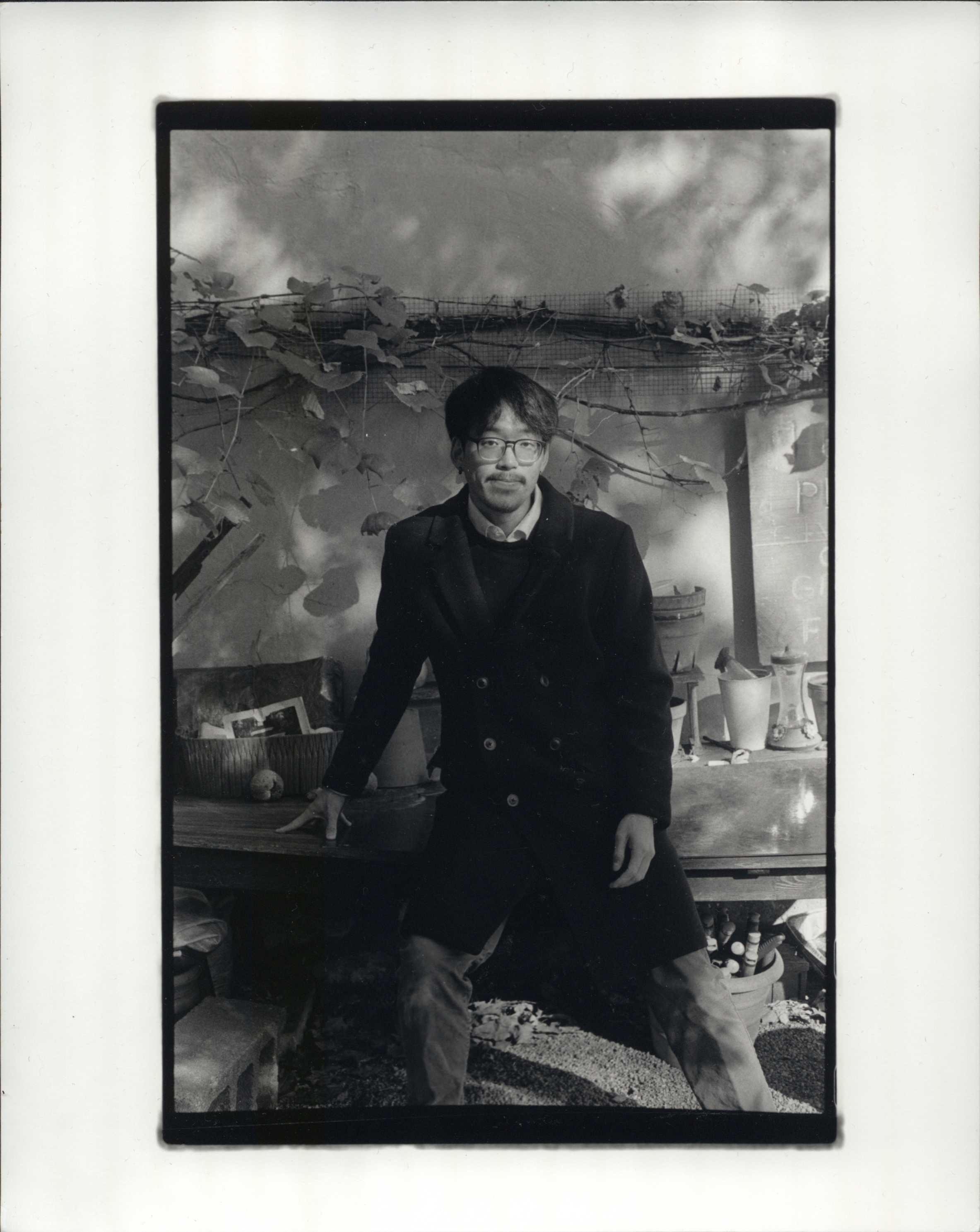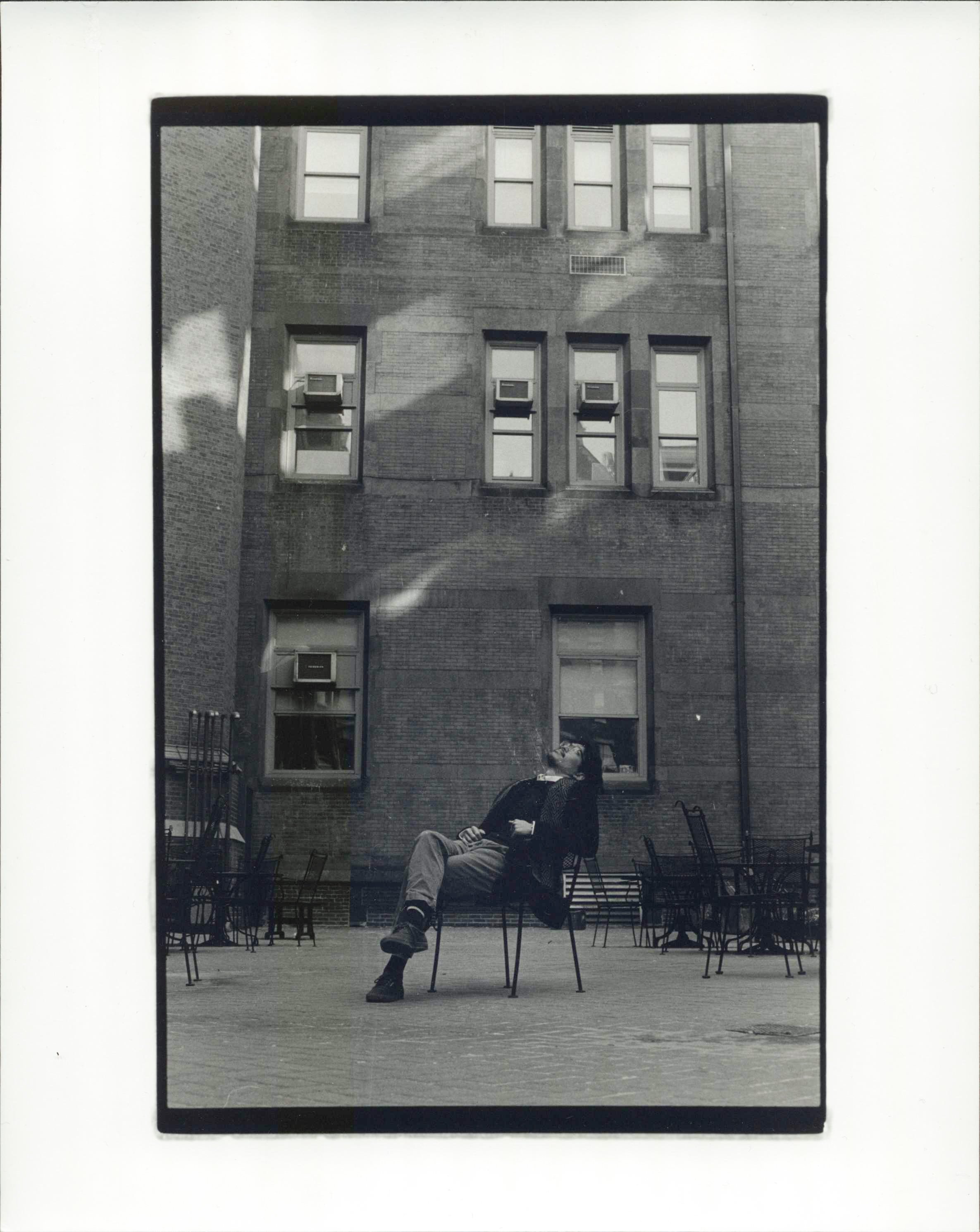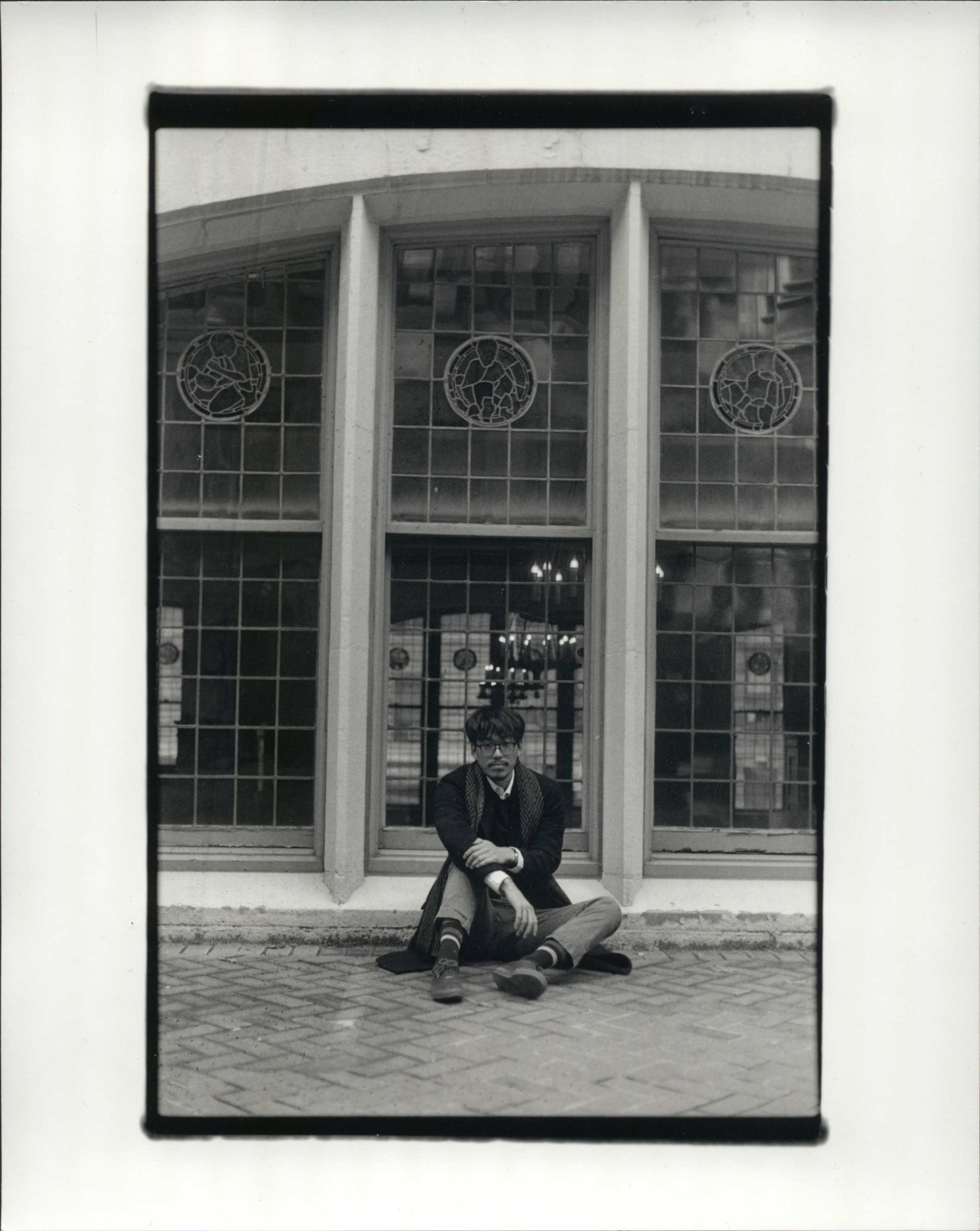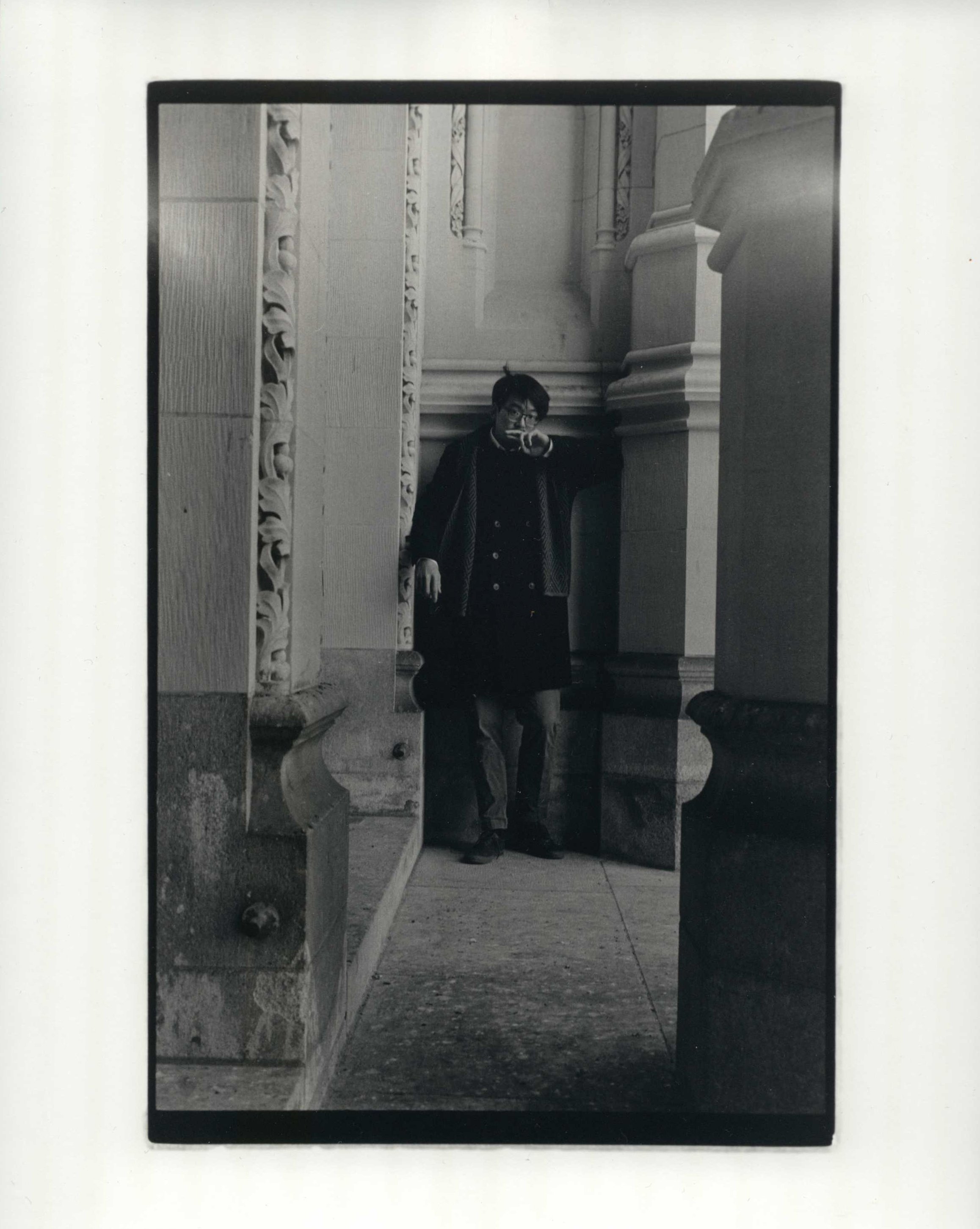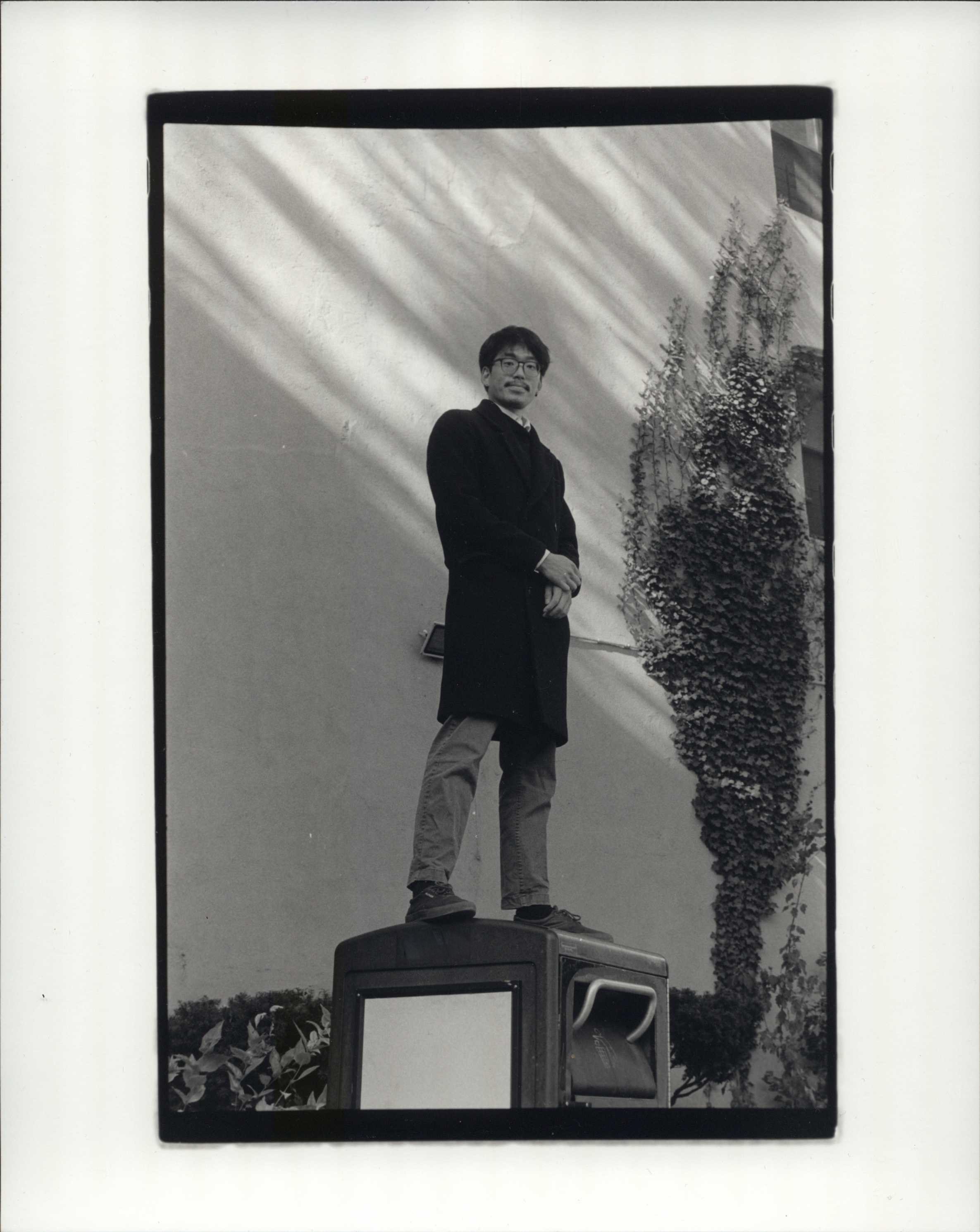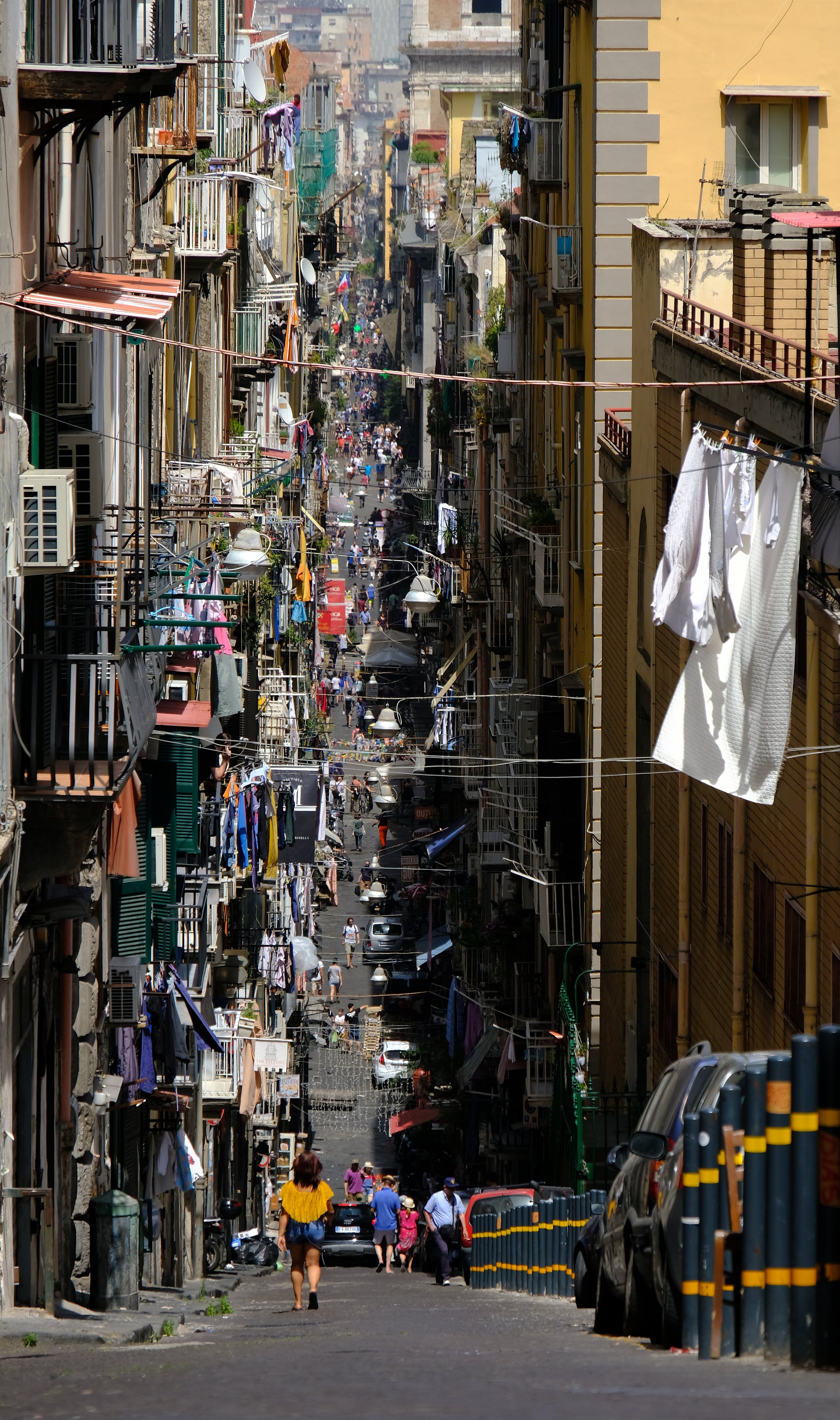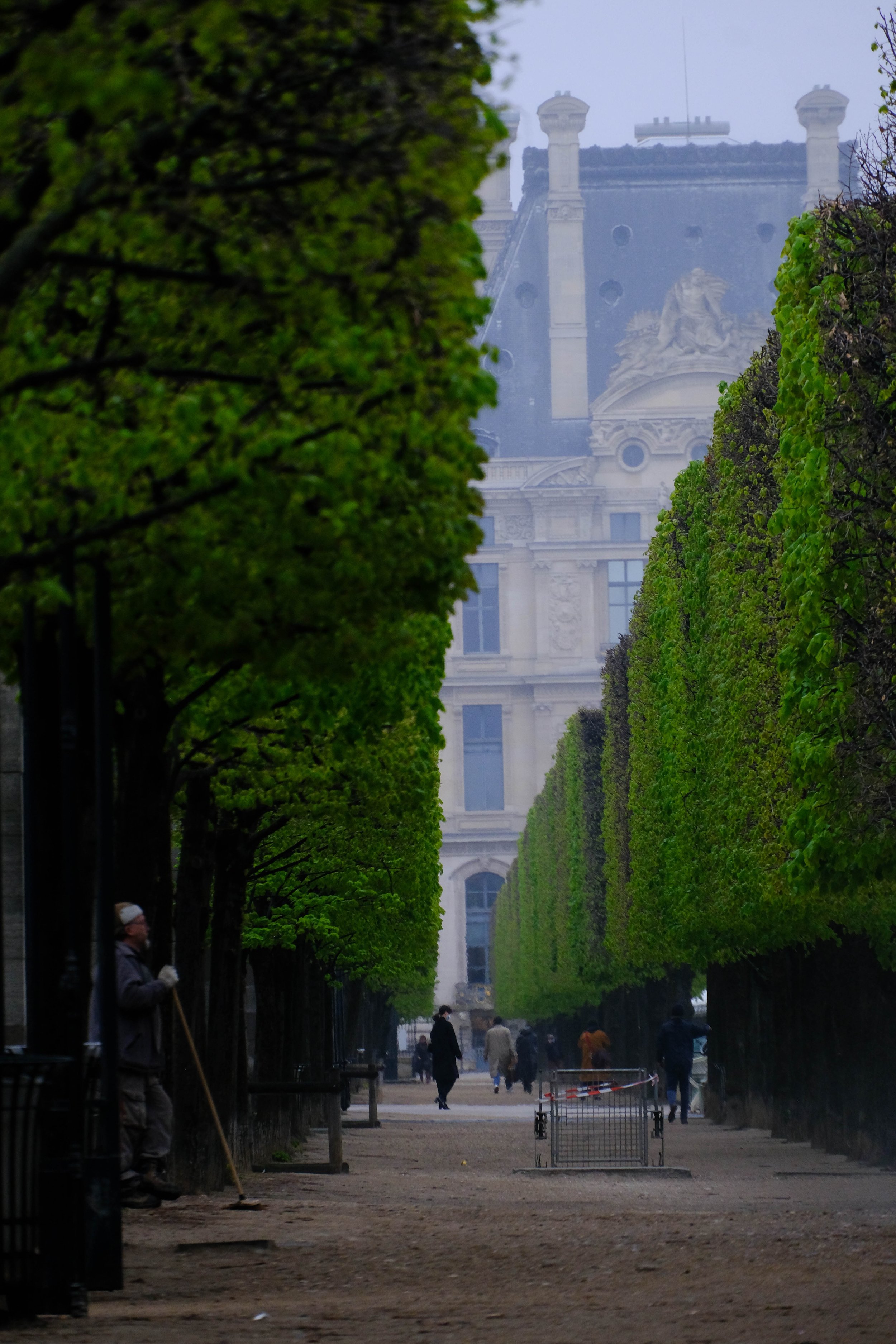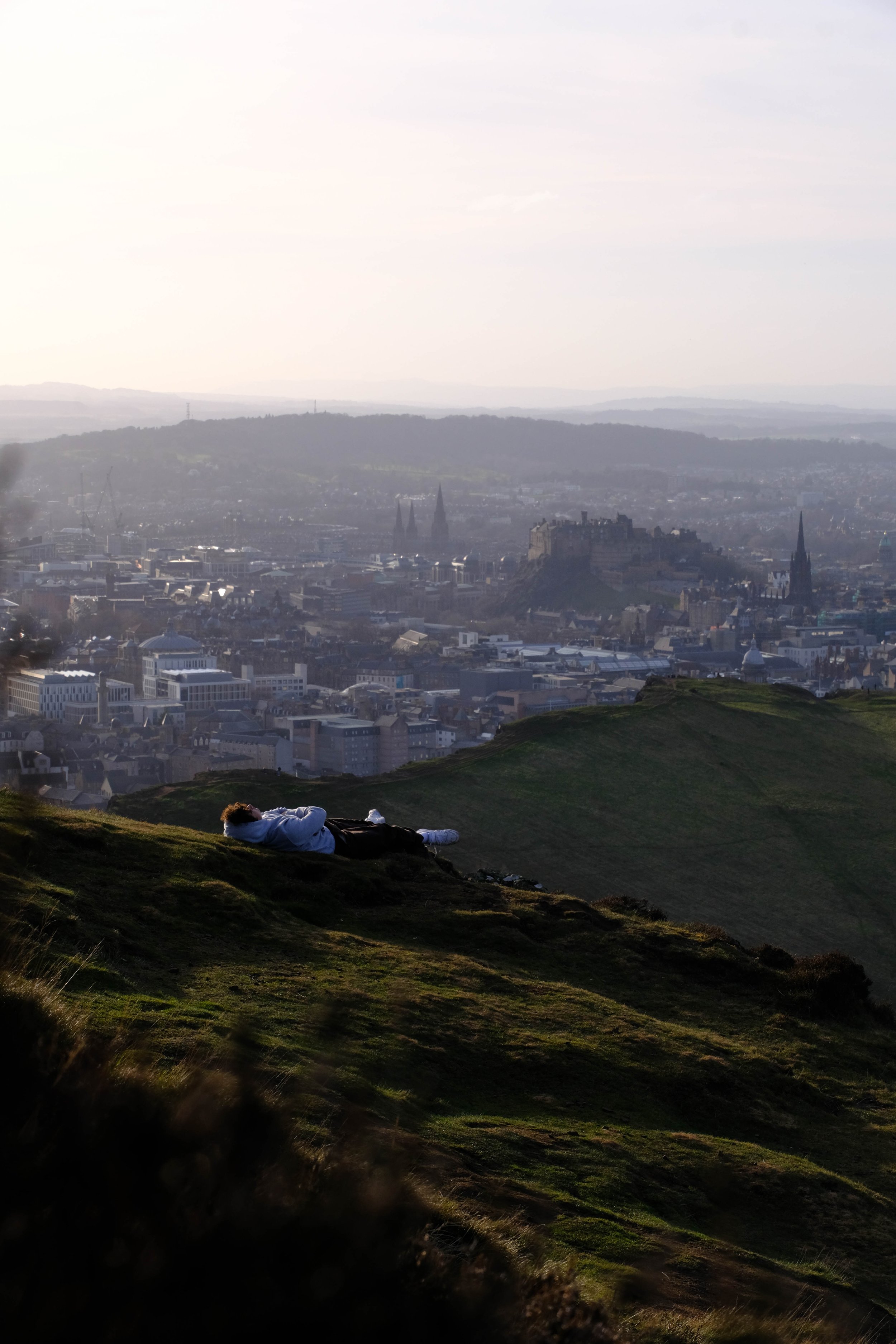Feature by Nora Cazenave
Photos by Caroline Cavalier
Chandler Jong is a first year Master’s student studying Quantitative Methods. He finds beauty in life’s mundanity and enjoys capturing thoughts and memories.
I sit down in Joe Coffee, notebook in hand, to wait for Chandler. He speeds in moments later—a whirlwind—holding a giant pizza box, tells me it was given to him by a professor, and offers me a slice. He wears all black (turtleneck and slacks) and his demeanor is friendly. We get right into it.
Chandler is a first year Master’s student studying Quantitative Methods. I have no idea what that means, but I resolve to look it up later. One reason why he studies this is because he seeks to “understand people better.” This seems to be his driving motive, a throughline in both his photography and the way he lives his life. Originally born in South Korea, Chandler moved to the United States in the second grade, living in Georgia for most of his life. He’s moved around frequently, something that becomes apparent from looking at his photos. After finishing his undergraduate degree, he moved to Montana, Michigan, Ontario, and now New York City. He also mentions brief stints in California, Washington State, and Nebraska.
Chandler is someone who believes fundamentally, genuinely, in the humanity of everyone he meets. His central mission, through photography, is finding beauty and moments of intimacy in every interaction. He explains that labels are “superficial,” and that beneath our labels and layers, people have a “true self.” I’m prone to cynicism, so I initially find this idea ambiguous, and maybe a little surface level.
But Chandler’s belief in uncovering his subjects’ humanity is entirely authentic. “I think when people live their lives doing mundane things, like getting a cup of coffee, there’s that little spark of human interaction between the barista and the person who’s buying the coffee. That's the kind of stuff that I want to capture.”
In addition to this “human spark,” Chandler’s experiences moving from place to place have heavily influenced his work, though the constant traveling and relocating has been a double-edged sword. After graduating college, he was surprised to find the world as “dark” as it is. “I will say it's been surprising to see how prevalent misogyny and racism is in real life. Once you’re graduating from university, you think the world is what you hope it’s supposed to be. But once you go out there, it's not glamorous.” He tells a story about being in rural Montana the day after Trump’s election—a racist interaction, a white man telling him to “go back to China,” his fear in that moment. But I’m struck by his retelling of the story. “I’m not Chinese. But I didn’t say that. I just said, ‘I love this country. Do you love this country?’ And he said, ‘yes, I do.’ And I said, ‘Well, great. I love this country, too.’ And we hugged it out.”
It’s difficult to discern whether Chandler’s unfazed attitude toward what he calls an “unglamorous” world is shockingly hopeful, or if he’s simply been toughened by his experiences. It’s an attitude I’ve rarely seen reflected by members of Columbia’s community. “I have lived in many different places. I've met cowboys—I've been to bars, and I've drank alongside complete strangers, cowboys, with their cowboy hats and boots—Christmas Eve in 2016, that was a fun Christmas Eve—I have also rubbed shoulders with some rough people in Michigan. And you know, I've met these people, I've met conservatives, you know, and I'm like, I don't care about who you voted for. Who are you as a person? Living in these places allowed me to really see these people that I was interested in. You don't need all the labels.”
I ask if he sets out to tell stories with his photos, and he explains that he simply wants to capture beautiful moments on camera—the stories are a natural result. “It’s as if I’m documenting my life,” he says. He sees his portfolio as a sort of journal, each photo an entry. “Where have I been? Where have I lived? Where have I traveled? What was I doing? Well, there’s the photo to prove it!”
His photos all capture specific moods. While they range from city-scapes to street photography to landscapes (and more), each image shows an understanding of its subjects and its location. One particular photo stands out to me as unusually surreal—a woman on an innertube, a school of fish, everything bathed in blue—it feels like the interior of a fish tank. “That was taken with my Fujifilm X-Pro1, which is a pretty old camera, it’s really slow. Most of my photos I've ever taken with that camera always came out somewhat blurry. That is the only photo I've taken with that camera that I really liked. And it’s also super clear…The story behind it was I was in the Bahamas, I was on a vacation. And then there was an underwater slide. And I was taking a photo, and then a girl came down, so I timed it right, and then fishes swam by and it came out beautiful!”
His photos range from breathtakingly cinematic to incredibly personal and undeniably human.
In one particular photo taken in Japan, although I’ve never been there, Chandler captures a familiar experience—the hustle and bustle of a train station, endless crowds, and the feeling of solitude within a big city. “It isn’t intentional, but it would be nice to have people who view my photos feel as if they're there themselves. Because when I review my photos, it feels like I'm reliving those moments. And if someone can kind of do that, too, that'd be nice.”
His advice to other photographers is to “just do it.” He’s a self-taught photographer, who got started by watching YouTube tutorials and taking photos on his flip-phone in seventh grade. While he admits that being able to buy nicer equipment after graduation is what helped kick off his photography career, he is adamant that expensive equipment should not be the only key to taking good photos. “Even if you have only your cell phone, your cell phone is enough to take really good photos too. Don't let your camera be the only thing that stops you from taking your photos. Just do it.”
The flip-phone is what catalyzed his passion for photography. “That's when I really began getting into photography, just taking photos of things that I thought were pretty, and then seeing things from my perspective…I just wanted to share what I thought was pretty with other people. It turns out other people think it's pretty too.” Again, he returns to this idea of capturing the beauty of human interaction in his work. “It's even more amazing to find that moment that will never happen again. This is a once in a lifetime interaction between two strangers. And I think those kinds of instances—you're capturing a concept, not just a pretty picture. That's really beautiful.”
When I ask if he has any plans or goals for the future of his photography, he says that maybe someday, if he has a house, he’ll decorate it with the photos. “I'm not conceited enough to think people will pay money to see my photos. So I don't know…I haven't thought this through too much. I will keep taking photos for the rest of my life. And then once I'm dead, burn it all with me, because I'm dead, and so are my photos,” he jokes.
Too late, I think. They’re already in Ratrock.




























